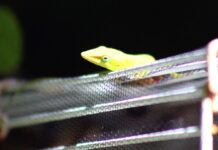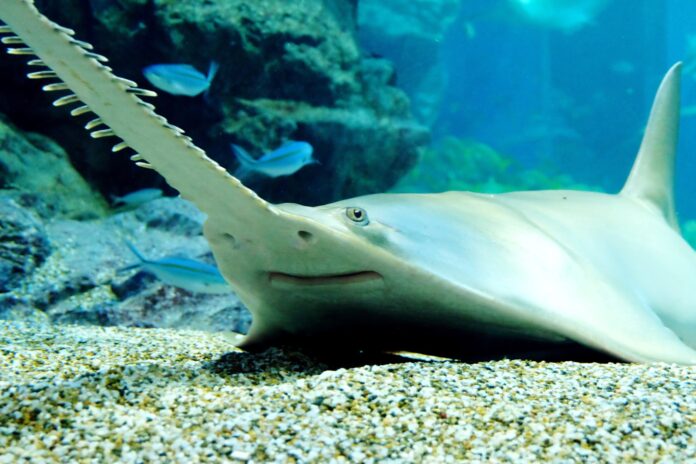With a sawfish death toll at 21 and other species exhibiting bizarre behavior, such as spinning in circles, Florida Keys leaders have united to support researchers in a search for the causes behind the troubles.
The Monroe County Board of County Commissioners on March 13 announced its support for the Florida Fish and Wildlife Conservation Commission (FWC) in its quest to uncover the mystery behind both the ongoing deaths of the rare, critically endangered smalltooth sawfish and fish abnormalities in the Keys.
“We know there is a lot of frustration in the community not knowing what is going on,” said commissioner Michelle Lincoln of Marathon. “We are all extremely concerned about our ecosystem and what is causing this to happen.”
FWC’s investigation is an organized response by researchers and environmental advocates. And State Rep. Jim Mooney, of Islamorada led an effort to send $2 million in state funds for the FWC’s effort in determining the scale and scope of the recent fish mortality and disease happening in Biscayne Bay, Florida Bay and the Keys.
“The FWC will contract with nonprofits to assist with data collection and analysis, and employ local fishing guides to assist with data collection,” county spokeswoman Kristen Livengood said.
For now, the BOCC is helping spread the word of the FWC’s efforts.
County Mayor Holly Rashein said, “We are fully supporting our state scientists and experts in working as quickly as possible to discover what is happening.”
What FWC knows so far:
- There have been 21 documented deaths of smalltooth sawfish, one of five species of sawfishes.
- Based on fish necropsy data, there are no signs of a communicable pathogen and specimens were negative for bacterial infection. Additional sawfish tissues are still being processed for analysis.
- Dissolved oxygen, salinity, pH and temperature are not suspected as the cause of the fish behavior or kills.
- Red tide toxins produced by Karenia brevis have not been detected in water samples.
How to help
Report all healthy, sick, injured or dead sawfish to FWC’s Sawfish Hotline at 844-472-9374 or email Sawfish@myfwc.com with the date, time and location of the sighting, estimated length, water depth and other relevant details.
NOAA describes smalltooth sawfish as being “olive gray to brown on top” with a white underside.
“Although sawfish have shark-like bodies, they are actually a type of ray,” NOAA’s website says. They get their name from their long, flat snouts that are lined with about 22 to 29 teeth on each side.
Under the Endangered Species Act, it is illegal to catch, harm, harass or kill an endangered sawfish. It is also illegal to possess, sell, carry or transport sawfish or parts of sawfish — such as the rostrum (snout).
While some fishermen catch sawfish as bycatch, they can follow safe handling and release guidelines to quickly and safely release incidentally captured sawfish.
Report fish concernsIf you see abnormal fish behavior, fish disease or fish kills, submit a report to FWC’s Fish Kill Hotline either through the web form MyFWC.com/ReportFishKill or call 800-636-0511.






















